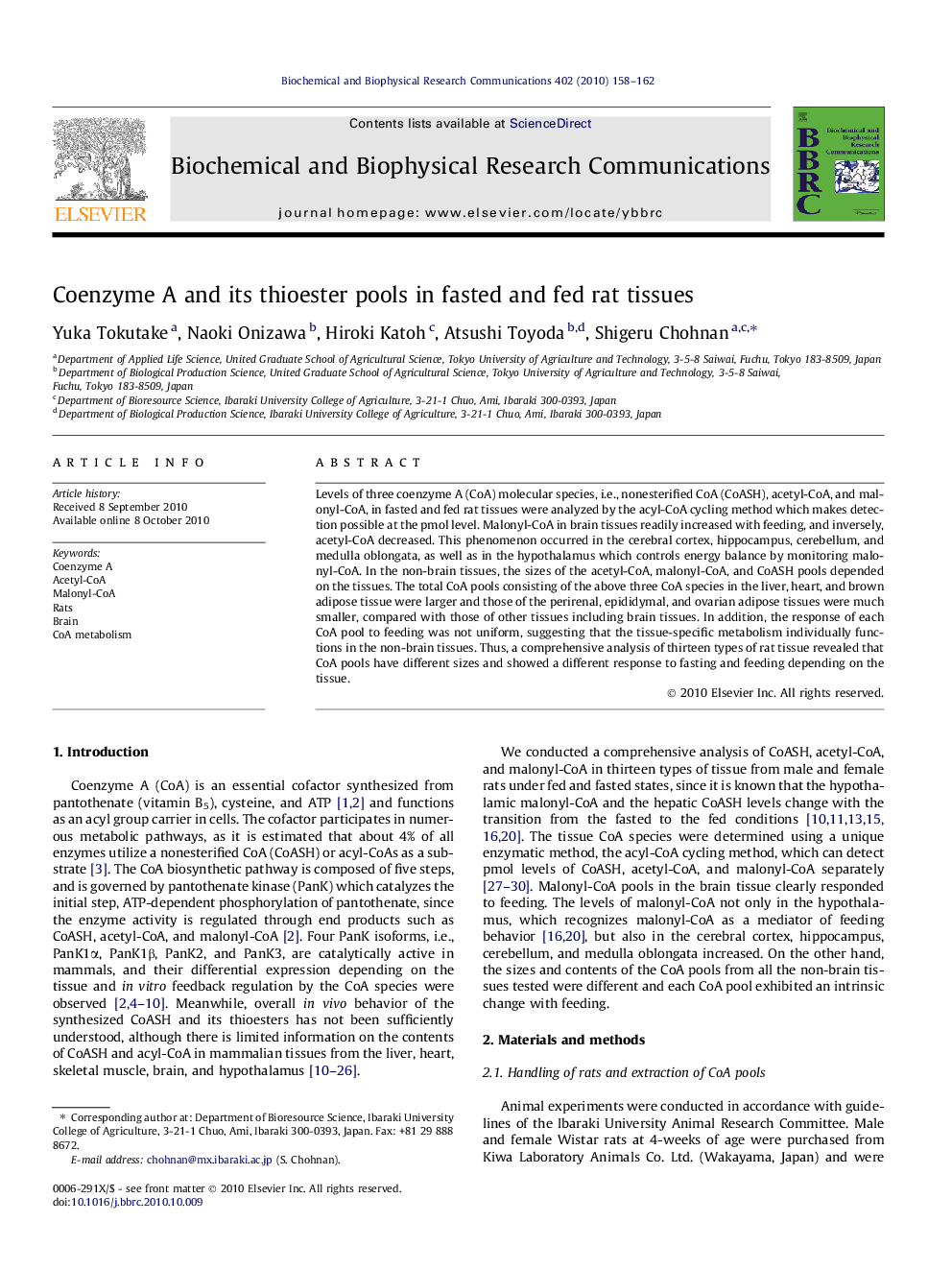| Article ID | Journal | Published Year | Pages | File Type |
|---|---|---|---|---|
| 1931005 | Biochemical and Biophysical Research Communications | 2010 | 5 Pages |
Levels of three coenzyme A (CoA) molecular species, i.e., nonesterified CoA (CoASH), acetyl-CoA, and malonyl-CoA, in fasted and fed rat tissues were analyzed by the acyl-CoA cycling method which makes detection possible at the pmol level. Malonyl-CoA in brain tissues readily increased with feeding, and inversely, acetyl-CoA decreased. This phenomenon occurred in the cerebral cortex, hippocampus, cerebellum, and medulla oblongata, as well as in the hypothalamus which controls energy balance by monitoring malonyl-CoA. In the non-brain tissues, the sizes of the acetyl-CoA, malonyl-CoA, and CoASH pools depended on the tissues. The total CoA pools consisting of the above three CoA species in the liver, heart, and brown adipose tissue were larger and those of the perirenal, epididymal, and ovarian adipose tissues were much smaller, compared with those of other tissues including brain tissues. In addition, the response of each CoA pool to feeding was not uniform, suggesting that the tissue-specific metabolism individually functions in the non-brain tissues. Thus, a comprehensive analysis of thirteen types of rat tissue revealed that CoA pools have different sizes and showed a different response to fasting and feeding depending on the tissue.
Research highlights► Changes in the size and composition of CoA and its thioester pools in rat tissues. ► Increase of malonyl-CoA level in brain tissues in response to feeding. ► Inverse relationship between acetyl-CoA and malonyl-CoA levels in brain tissues. ► Formation of larger total CoA pools in liver, heart, and brown adipose tissue.
